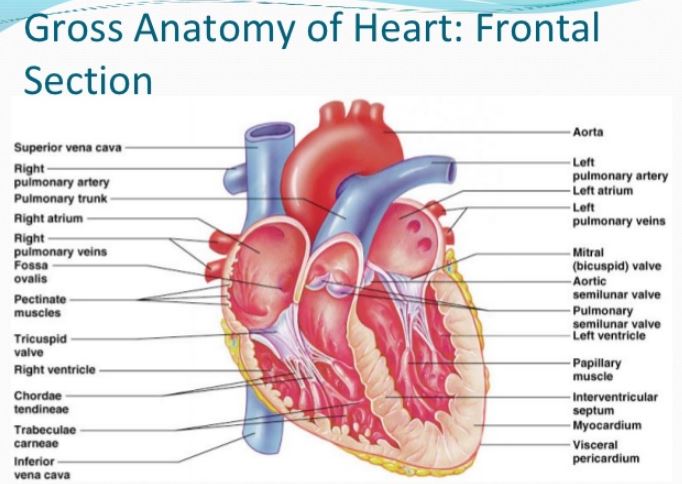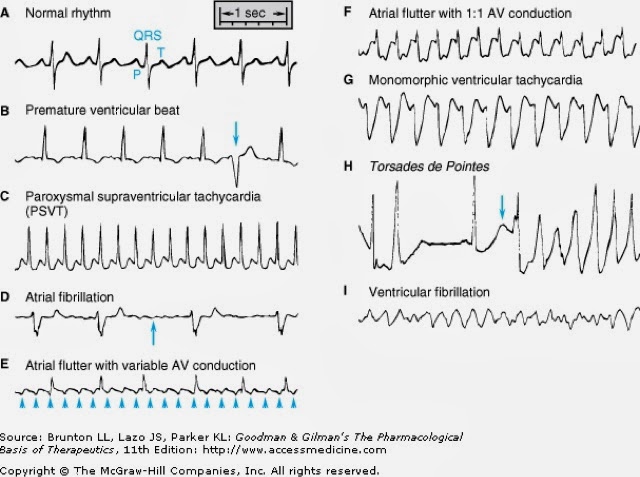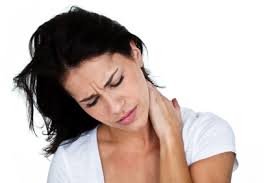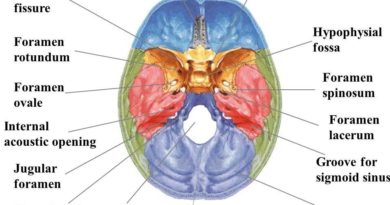Irregular Heartbeat
What Is Irregular Heartbeat?
Irregular heartbeat is people may sometimes feel that their heart beats too fast or too hard. The irregularity of the heartbeat are typically harmless but it can be a symptom of an underlying medical condition. If this is caused by another medical condition, it should be managed immediately to avoid the development of complications [1, 2, 3].
The heart beats in a regular rhythm at a rate that is appropriate for the body’s work at that particular moment. The normal heart rate for an adult is between 50-100 beats per minute and the rate is higher in children [3].
Many of the changes in the heart rate are minor and usually do not require medical attention but if this condition persists for a long time, it can be a sign of a medical condition [1, 2, 3].
There are 4 chambers in the heart: the atria and the ventricles. There is an electrical system within the organ that powers it and puts out pulses in a regular rhythm. The sinoatrial node (SA node) is responsible for the electrical impulses that make the muscles in the atria to contract.

It is the atrioventricular node (AV node) found in the ventricles that send the electrical impulse for it to contract. Any irregularity in the heartbeat is known as arrhythmia and it can be caused by different factors [1, 2, 3, 4, 5].
Types
There are different types of arrhythmia depending on the changes in the rhythm [5].

Premature atrial contractions
Electrical impulses in the atria cause some extra early beats. The occurrence of this is usually harmless and do not require any treatment [5].
Premature ventricular contractions
This is considered to be the most common type of arrhythmia that may occur in people even without a heart disease. It is often described as the skipped heartbeat that is experienced occasionally [5].
Atrial fibrillation
In this type of arrhythmia, the upper chambers of the heart or the atria are contracting in an abnormal manner [5].
Atrial flutter
An atrial flutter also causes abnormal contractions in the atria but these contractions are more organized and regular than atrial fibrillation. This usually occurs in patients who underwent a heart surgery. Atrial flutter is usually a precursor to the development of atrial fibrillation [5].
Ventricular tachycardia
This is a rapid heart rate that is originating from the ventricles. The elevated heart rate does not provide enough time for the ventricles to be fill up with blood which decreases the amount that is circulated in the body. This is a serious condition that requires medical attention [5].
Ventricular fibrillation
There is an erratic and disorganized firing of impulses from the ventricles. This causes these chambers to quiver and unable to contract. This is considered to be a medical emergency because the heart is unable to pump blood into the system. Treatment should be initiated as soon as possible [5].
Bradyarrhythmias
Bradyarrhythmia or bradycardia is a condition where the heart rate is less than the normal rate. This occurs when there is a problem with the electrical conduction system of the heart. Examples of bradyarrhythmias are SA node dysfunction and heart block. A heart block occurs when there is a delay or complete block in the transmission of electrical impulses from the SA node to the ventricles. The resulting heart rate is irregular and very slow [5].
Causes
Some of the conditions which can directly cause an irregular heartbeat may include [1, 2, 3, 4, 5]:
- A heart attack that is currently happening
- Changes in the structure of the heart such as in cardiomyopathy
- Coronary artery disease that causes blocked arteries in the heart
- Increased or decreased thyroid activity (Hyperthyroidism or hypothyroidism)
- Diabetes
- Sleep apnea
There are also risk factors which may increase the likelihood of an irregular heartbeat to develop [1, 2, 3, 4, 5]:
- Elevated blood pressure
- Increased levels of stress
- Increased consumption of caffeine or alcohol
- Smoking
- Intake of certain medications and supplements such as over-the-counter cold and allergy drugs
- Use of recreational drugs
Symptoms
There may not be any noticeable signs and symptoms with an irregular heartbeat. The physician may discover the presence of an irregular heartbeat during a routine medical examination before the patient may feel anything. Some of the signs and symptoms that may include [1, 2, 3, 4, 5]:
- Fluttering in the chest
- Shortness of breath
- Chest pain
- Lightheadedness or dizziness
- Sweating
- Fainting
Urgent medical attention should be sought once the frequency of the manifestation of these symptoms has increased [1, 2, 3, 4, 5].
Treatment and Management
Not all cases of irregular heartbeats would require treatment. It is only required if the irregular heartbeat causes significant symptoms or if it could develop into a more complicated type of arrhythmia [1, 2, 3, 4, 5].
Slow heartbeats
If there are no underlying conditions that cause bradycardia or slow heartbeat, it can be managed with the use of a pacemaker. It is a small device that is implanted in the collarbone of the patient.
The electrode-tipped wires of the pacemaker are run through the blood vessels to reach the inner heart. If the heart is beating too slow or stops beating, it sends out electrical impulses to stimulate the heart in beating at a steady rate [1, 2, 3, 4, 5].
Fast heartbeats
A fast heartbeat may be stopped by performing vagal maneuvers such as straining, coughing and holding one’s breath. These maneuvers affect the vagus nerve which controls the heartbeat. It would often cause the heart rate to slow but it does not work on all types of arrhythmia [1, 2, 3, 4, 5].
Anti-arrhythmic medications may also be used to slow down the heart rate. It is important to take these medications according to the instructions of the physician to avoid any complications [1, 2, 3, 4, 5].
A cardioversion may be done by a physician for some irregular heartbeat conditions such as atrial fibrillation. In this procedure, paddles or patches are connected to the chest of the patient. A shock is then delivered to the heart through the paddles. The current from the shock can help the heart to restore a normal rhythm [1, 2, 3, 4, 5].
If the irregularity in the heartbeat is caused by a blocked artery, a coronary bypass surgery may be performed by the physician. The bypass will help to improve the blood flow to the heart [1, 2, 3, 4, 5].
References
- Mayo Clinic Staff. (2016, February 23). Heart Arrhythmia. Mayo Clinic: http://www.mayoclinic.org/diseases-conditions/heart-arrhythmia/home/ovc-20188123
- American Heart Association. (2016, September 16). Symptoms, Diagnosis & Monitoring of Arrhythmia. Retrieved from American Heart Association: http://www.heart.org/
- Web MD. (2015). Change in Heartbeat – Topic Overview. Web MD: http://www.webmd.com/heart-disease/tc/change-in-heartbeat-topic-overview#1
- Krucik, G. (2017). What causes abnormal heart rhythms? 71 possible conditions. Healthline: http://www.healthline.com/symptom/abnormal-heart-rhythms
- British Heart Foundation. (2017). Abnormal Heart Rhythms. British Heart Foundation: https://www.bhf.org.uk/heart-health/conditions/abnormal-heart-rhythms



